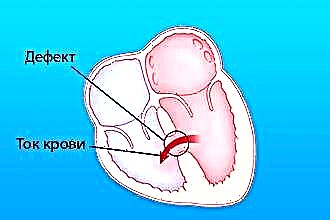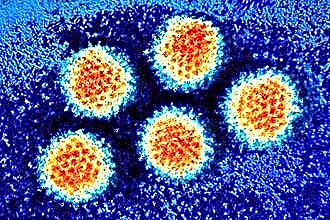A stuffy nose accompanies almost any cold. Usually, the nose does not breathe for the first 2-3 days, during the acute period of the disease, and then the congestion gradually disappears. But it also happens that a person constantly has a stuffy nose, for several weeks, or even months. What to do if your nose is constantly stuffed up?
 Before talking about how to get rid of persistent congestion, it is necessary to clarify that such symptoms are characteristic of many diseases, and each of them requires a special approach to treatment.
Before talking about how to get rid of persistent congestion, it is necessary to clarify that such symptoms are characteristic of many diseases, and each of them requires a special approach to treatment.
For example, a treatment suitable for chronic rhinitis will be completely useless if there is congestion as a result of a deviated nasal septum. Thus, in order for the treatment to be effective, you first need to clearly determine the cause of the violation of nasal breathing, and only then begin to act.
Only the attending physician should diagnose and prescribe treatment; we will introduce you to the most common causes of congestion, and tell you how you can cure them.
Possible diseases
Nasal congestion is observed in diseases of the ENT organs such as:
- Chronic catarrhal rhinitis. Symptoms of this condition are a lingering runny nose, frequent nasal congestion (alternately in both nostrils). Usually caused by a chronic bacterial infection of the nasal cavity.
- Hypertrophic rhinitis. Its feature is an increase in the volume of the nasal mucosa, not so much due to edema, but as a result of the growth of the epithelium. In view of this, with hypertrophic rhinitis, vasoconstrictor drops do not facilitate nasal breathing, and the nose is almost always blocked.
- Atrophic rhinitis is an inflammation caused by the death of mucosal cells. The disease is characterized by drying out of the nasal cavity and the constant accumulation of dry crusts in the nose.
- Rhinitis medicamentosa. Its cause is the continuous use of vasoconstrictor nasal drops for several weeks / months. The mucous membrane with medication rhinitis is constantly swollen due to the relaxation of the blood vessels.
- Vasomotor rhinitis (allergic or neurovegetative). With vasomotor rhinitis, the mucous membrane becomes inflamed in response to harmless stimuli, which is why a profuse runny nose and nasal congestion are often worried.
- Overgrowth of the adenoids. It is diagnosed mainly at the age of 3 to 14 years.
- Curvature of the nasal septum is more typical for adults. With a curvature, one or both nostrils breathe poorly (or does not breathe at all). In this case, a person becomes more vulnerable to infections, often suffers from sinusitis, otitis media, throat infections.
This list is far from complete. However, it gives an idea that the mechanisms leading to nasal congestion can be quite different.
Treatment depends on the cause of the congestion.
If the nose is constantly blocked, several options are possible:
- the nasal passages are narrowed due to mucosal edema;
- the mucous membrane is overgrown (overgrown);
- the nose is clogged with thick, viscous discharge;
- the lumen of the nasal cavity is blocked due to anatomical disorders (curvature of the nasal septum, the formation of polyps, cysts, etc.).
Treatment of congestion directly depends on the above mechanisms of congestion formation.
So, if the nose is not breathing as a result of edema, anti-inflammatory drugs (antihistamines, hormonal, etc.) are needed.
If you cannot breathe because of viscous mucus or pus, you must get rid of them with thinning drops based on seawater (or saline). In this case, it is important to establish the cause of the accumulation of secretions; if it is an infection, antibiotics will be required, otherwise pus will appear, no matter how much it is washed out.
If there are mechanical obstructions in the nasopharynx (deviated septum, polyps), the only treatment that can give a long-term effect will be surgery.
Medications
How to cure persistent nasal congestion? Depending on the reasons, appropriate treatment is selected, which usually includes nasal medications (drops and sprays in the nose, ointments), and general-purpose medications aimed at eliminating the causes of congestion (for example, hormonal drugs, antibiotics, etc.).
Nasal drops
If the nose is blocked all the time, the only salvation seems to be vasoconstrictor drugs - drops or sprays, such as Naphtizin, Otrivin, Nazivin, Sanorin, etc. Indeed, vasoconstrictors quickly facilitate nasal breathing with most types of congestion. That is why many people suffering from difficulty in nasal breathing, "addicted" to such drugs, and, as a result, get another disease - rhinitis medication. The nose becomes congested almost constantly, and, moreover, it ceases to react to drops as before - the relief after instillation becomes less pronounced, and does not last long. Additional problems arise - headache, burning sensation in the nasopharynx, dry mouth, tachycardia, etc.
It is safe to use vasoconstrictor drugs for the nose for no more than 5-7 days. That is why they are not suitable for treating chronic congestion.
What drops to use to eliminate nasal congestion? Experts advise using drops that are not addictive, and those that can be used for a long time (a month or more).
Among such drugs, oil-based nasal drops can be distinguished - Pinovit, Vitaon, Pinosol and analogues. As active ingredients, oil drops contain essential oils of pine, eucalyptus, tea tree, sea buckthorn, as well as fat-soluble vitamins A and E. Such drops will be especially useful for atrophic rhinitis. In addition, oil drops have anti-inflammatory and antiseptic effects, so they are often used in the treatment of infectious processes in the nasal cavity and sinuses. You can make an analogue of oil drops yourself by mixing a tablespoon of sea buckthorn oil with a few drops of eucalyptus or fir.
Another group of highly effective nasal drops are glucocorticosteroids (hormonal drops and sprays). Glucocorticoids - substances that relieve inflammation; when using them, the edema disappears and the formation of excess mucus stops. Hormonal drugs are prescribed for allergic rhinitis, neurovegetative form of vasomotor rhinitis, as well as for medication rhinitis. Research also speaks of the effectiveness of glucocorticosteroids for nasal polyposis - gradually the polyps decrease, nasal congestion decreases, and the sense of smell is partially restored.
In pharmacies, there are many nasal preparations based on glucocorticosteroids - Nasonex, Tafen Nazal, Avamis, etc. All of them have a prolonged effect - it is enough to bury the nose once a day. Another advantage of hormonal drops is the ability to apply them continuously for several months.
It is important that glucocorticosteroids are practically not absorbed into the blood from the surface of the mucous membrane, thereby excluding the development of side effects of hormones.
General therapy
For some diseases that cause nasal congestion, local treatment is not enough - general drugs are required. This primarily applies to infectious diseases of the nose and sinuses. - chronic rhinitis, sinusitis, etc. To cure these diseases, it is necessary to act on their cause - bacteria. General antibiotics do this well.
- chronic rhinitis, sinusitis, etc. To cure these diseases, it is necessary to act on their cause - bacteria. General antibiotics do this well.
It should be noted that antibiotics are among those drugs that are taken strictly in a course, regardless of how quickly the improvement in well-being came. For example, if the doctor prescribed you an antibiotic for 14 days, and after 3 days the nasal congestion and other symptoms disappeared, you must complete the drug intake and follow the prescribed course for another 11 days.
An interrupted course of antibiotic therapy can lead to the formation of resistance in bacteria to the antibiotic used.
In chronic rhinitis / sinusitis, persistent microflora is difficult to treat. To completely eradicate the infection, you will have to use other antibiotics, stronger ones, often with a lot of side effects.
For congestion associated with allergic rhinitis, antihistamines are widely used. They have a pronounced anti-inflammatory effect, due to which the swelling of the mucous membrane decreases and the production of watery mucus stops. There are three generations of antihistamines - the first, second and third (new) generation. Of course, preference should be given to drugs of the second and third generation, such as cetirizine, ebastine, fexofenadine, desloratadine. Firstly, they are more effective in relieving swelling, and secondly, they are devoid of many side effects (for example, they do not cause drowsiness).
For allergic rhinitis, local antihistamines are also used - allergodil (second generation), vibrocil, sanorin-analergin, etc.
Supporting procedures
In many cases, the relief of well-being with congestion can be achieved by frequent irrigation of the mucous membrane with moisturizing solutions - saline, mineral water, special pharmaceutical agents. They can be used not only for irrigation, but also for rinsing the nasopharynx, steam inhalation, nasal shower. This will help moisturize the mucous membrane, soften the crusts, and thin the mucus, so that the nasal passages will be cleared more effectively. Such procedures will have a beneficial effect on almost any type of congestion.
Moisturizing the mucous membrane cannot be considered as the only treatment - it is only part of the therapy that promotes recovery.
In addition, as an auxiliary therapy, alternative methods of treatment can be used, in particular, washing the nasal passages with decoctions of plants, inhaling the vapors of essential oils, and acupressure of the sinuses.
Surgery
Causes of congestion such as adenoids, polyps, curvature of the nasal septum and proliferation of mucous membranes in hypertrophic rhinitis can only be eliminated by surgery. The question of the need for surgery is always individual, and depends on many factors. However, if nasal breathing is difficult and medication is ineffective, surgery is a smart solution.
Coping with chronic congestion is never easy, but with a serious attitude towards the problem, you can get rid of this problem forever.



